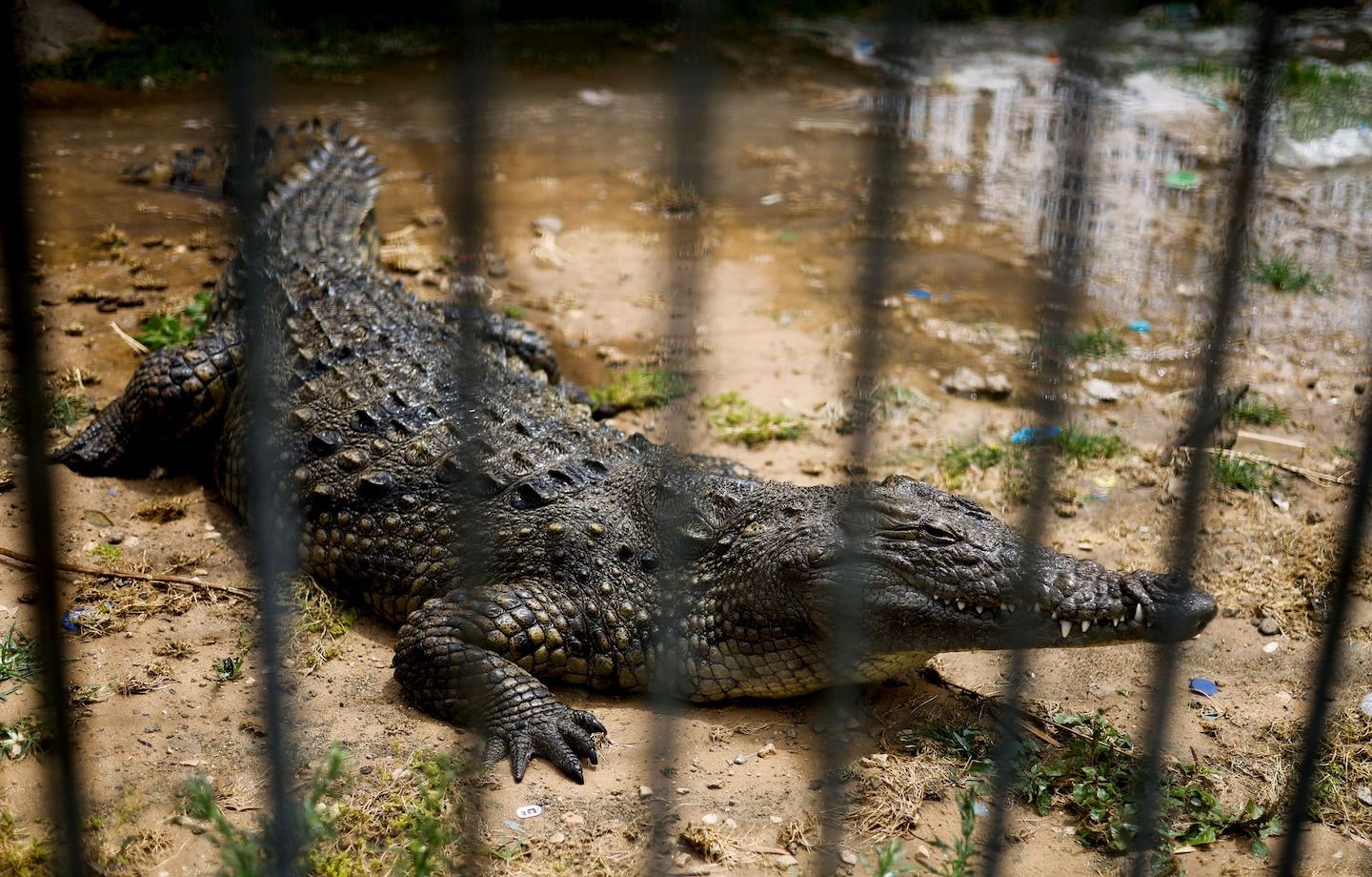Study: Crocodile found to impregnate herself, lay eggs, for first time
Listen 4 min Comment on this story Comment Gift Article Share
A crocodile in a Costa Rican zoo began guarding a spot in her enclosure, becoming aggressive when people approached. When employees later examined the area, they found 14 eggs. The zookeepers were shocked. Since the 18-year-old American crocodile arrived at the zoo about 16 years earlier, she had been isolated from fellow crocodiles. Plus, employees thought the crocodile was male.
Half of the eggs appeared fertile, so the zoo’s owner, Quetzal Dwyer, incubated them. While none hatched, Dwyer later opened an egg to find a fully formed stillborn crocodile.
Further research found that the stillborn was a genetic match solely to its mother, meaning that the adult crocodile impregnated herself. This occurred through facultative parthenogenesis, a form of asexual reproduction.
While other animals, including snakes and lizards, have reproduced through parthenogenesis, it was the first known case involving a crocodile, according to research results that were published Wednesday examining the 2018 event.
Advertisement
But lead researcher Warren Booth said crocodiles have probably been reproducing that way for centuries.
“It’s not been documented, but this has been happening since crocodiles evolved,” Booth, an urban entomology professor at Virginia Tech, told The Washington Post. “We just haven’t had the understanding to determine what it has been.”
The crocodile began living in isolation at reptile park Parque Reptilandia in Costa Rica’s Puntarenas province as a 2-year-old in 2002. When employees discovered her eggs in January 2018, they examined them using a flashlight and found dark spots inside seven of the eggs — an indication that something was growing inside.
When the incubated eggs failed to hatch three months later, Dwyer opened them. Six eggs appeared to hold undeveloped embryos, but one egg contained a roughly three-inch-long stillborn crocodile.
Advertisement
Dwyer contacted Booth after seeing he had studied asexual reproduction for years. Booth said he wasn’t surprised when Dwyer explained the scenario.
Since he published his first study on parthenogenesis in 2011, Booth has discovered several animals that reproduce that way. In addition to snakes and lizards, some bird and fish species use parthenogenesis. He figured crocodiles, which have similar genes to other reptiles, could do the same.
Facultative parthenogenesis occurs when a female produces an egg cell, which divides until it generates half the genes necessary to produce an offspring. The female also produces polar bodies, which are small cells that hold chromosomes nearly identical to the egg.
Polar bodies usually disintegrate. During facultative parthenogenesis, however, a polar body fuses with the egg to create the necessary number of chromosomes to give birth.
Advertisement
Booth wanted to prove that the stillborn crocodile was created through facultative parthenogenesis. Dwyer sent him the stillborn and its mother’s DNA sample. Through DNA testing, Booth found the stillborn shared 99.9 percent of its genes with its mother.
“While this embryo did not survive, I don’t think that really is an indicator that all of them would not survive in the future,” Booth said. “I’m sure that we will see lives cropping up in the not-too-distant future now that people are probably going to be looking for this more.”
Scientists don’t know why animals use parthenogenesis, but it might be caused by a species facing extinction or by its population size shrinking in its environment, Booth said. The International Union for Conservation of Nature, a Swiss sustainability organization, lists American crocodiles as a vulnerable species, the category prior to endangered.
Advertisement
Most facultative parthenogenesis discoveries have occurred in the past two decades as DNA testing has evolved. Booth also thinks the reproduction method may have been overlooked when it occurred while female animals lived alongside males.
A gene allowing female crocodiles to reproduce independently might have been passed down over millions of years — including when dinosaurs and flying reptiles existed, Booth said. He said future research might show other animals with similar genes to crocodiles, such as turtles, also use parthenogenesis.
“We’re showing that it’s actually not rare, but … a lot more potent than we think,” Booth said. “That makes it something more interesting to me because there seems to be a real suggestion that it has some ecological or evolutionary significance to it.”
Booth hopes more research will reveal what triggers parthenogenesis. For now, he plans to send the stillborn crocodile to a reptile exhibit in Johnson City, Tex., to commemorate the breakthrough.
“This is certainly not a one-off,” Booth said. “This is happening in the wild, and it’s probably been happening in reptile exhibits or zoos for as long as they’ve been kept.”
GiftOutline Gift Article
Source: The Washington Post


